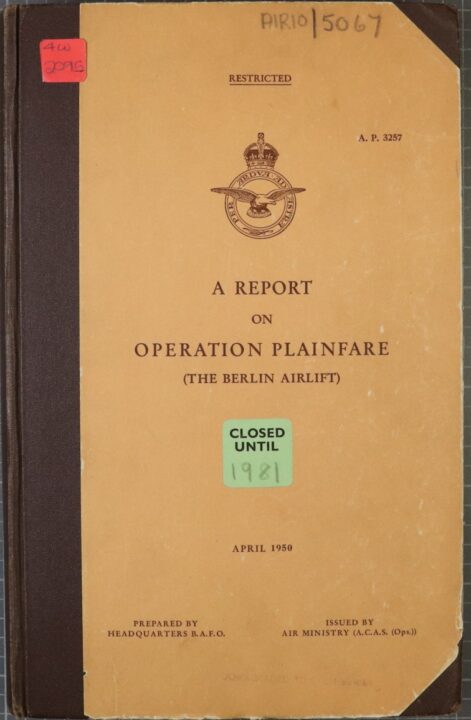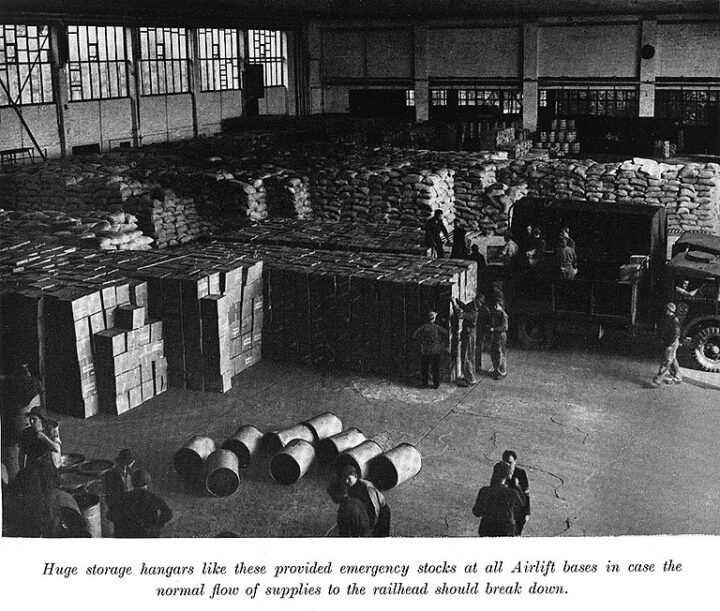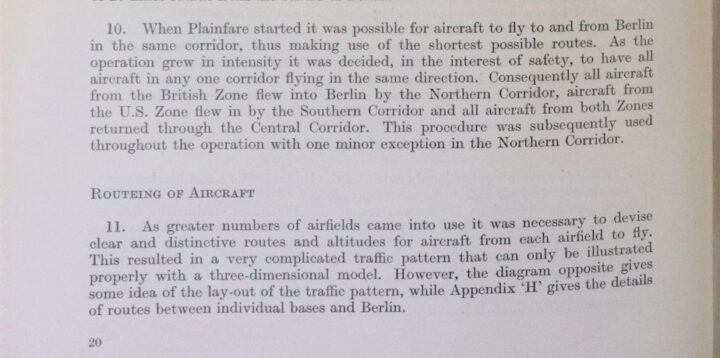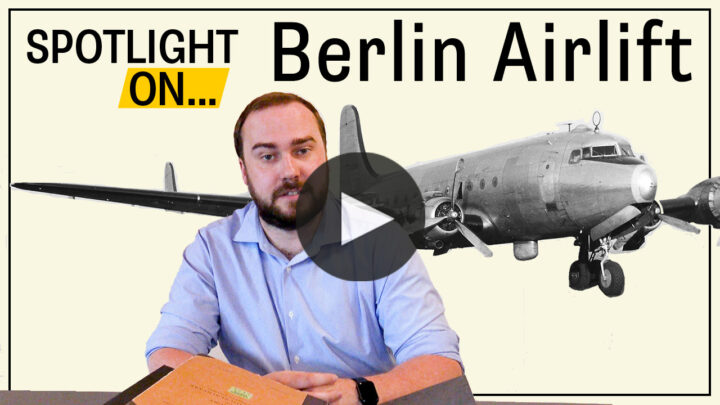
Air Ministry: Report on ‘Operation Plainfare’, 1950
We hope you enjoyed watching our Education Service video with Records Specialist Dr William Butler looking at records from the Air Ministry, the Royal Airforce, and related bodies. This video focuses on a report on ‘Operation Plainfare’, the Berlin Airlift (1948 June to September.)
Download Spotlight On: Berlin Airlift Resource Pack
Watch the video and look at the documents below, then try and answer the following questions:
- What is the role of the AIR Ministry?
- When was it set up?
- What types of sources can we find in these collections?
- What makes AIR Ministry documents valuable for historians?
- What document is examined in this video?
- What is the purpose of this report?
- How could the AIR Ministry use the findings of this report?
- How useful is this report to historians researching the Berlin Airlift?
Source 1: Front cover

Cover of report entitled ‘A Report on Operation Plainfare (The Berlin Airlift), April 1950, Catalogue ref: AIR 10/5067
Transcript
RESTRICTED
A.P.3257
A REPORT
ON OPERATION PLAINFARE
(THE BERLIN AIRLIFT)
CLOSED UNTIL 1981
APRIL 1950
PREPARED BY HEADQUARTERS B.A.F.O. ISSUED BY AIR MINISTRY (A.C.A.S (Ops.)
Source 1 – questions:
- Why do you think the AIR Ministry published a report on ‘Operation Plainfare’ (the Berlin Airlift)?
- Why do you think the report was ‘Restricted’?
- Can you explain why the Berlin Airlift was given an operational name?
- Can you explain the likely perspective of this report on the operation?
- Can you find out and explain the code-name used by USA military for the operation?
- Why was this document ‘closed’ to public access until 1981?
Source 2: Photograph from report
The caption of the photograph says: ‘Huge storage hangars like these provided emergency stocks at all Airlift bases in case the normal flow of supplies to the railhead should break down’.

Photograph from the report on Operation Plainfare (The Berlin Airlift), April 1950, Catalogue ref: AIR 10/5067
Source 2 – questions:
- What can you see in the photograph?
- What do the photograph and caption reveal about the organisation of the Berlin Airlift?
- What type of goods were airlifted to west Berlin?
Source 3: Extract from report

Extract from the report on Operation Plainfare (The Berlin Airlift), April 1950, Catalogue ref: AIR 10/5067
Transcript
- When Plainfare was started it was possible for aircraft to fly to and from Berlin in the same corridor, thus making use of the shortest possible routes. As the operation grew in intensity it was decided, in the interest of safety, to have all aircraft in any one corridor flying in the same direction. Consequently, all aircraft from the British Zone flew into Berlin by the Northern Corridor and aircraft from the U.S. Zone flew in by the Southern Corridor and all aircraft from both Zones returned through the Central Corridor. This procedure was subsequently used throughout the operation with one minor exception in the Northern Corridor.
ROUTEING OF AIRCRAFT
- As greater numbers of airfields came into use it was necessary to devise clear and distinctive routes and altitudes for aircraft from each airfield to fly. This resulted in a very complicated traffic pattern that can only be illustrated properly with a three-dimensional model. However, the diagram opposite gives some idea of the lay-out of the traffic pattern, while Appendix ‘H’ gives details of routes between individual bases and Berlin.
…
Source 3 – questions:
- What is an air ‘corridor’?
- Why were the flight paths of the British and American aircraft changed as the airlift progressed?
- What do these extracts of the report reveal about the organisation of the Berlin Airlift?
- Why would this report be useful for the Air Ministry?
Connections to Curriculum
Key stage 4
- AQA History GCSE: Conflict and tension between East and West, 1945–1972: Origins of the Cold war.
- Edexcel History GCSE: Superpower relations and the Cold War, 1941–91: The origins of the Cold War, 1941–58.
- OCR History GCSE: The Cold War in Europe 1945–1961: Rising Tensions.
Key stage 5
- AQA History GCE: The Origins of the Cold War, c1945–1949
- OCR History GCE: The Cold War in Europe 1941–1995
Related Resources
- Cold War on File
- Why did the Cold War emerge?
- Attlee’s Britain 1945-1951
- Planning for the future?
- Fifties Britain
- Never so good? Or too good to be true?
- Cabinet Papers 1915-1988
- History through the eyes of 73 years of the British Cabinet.




